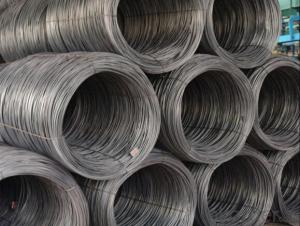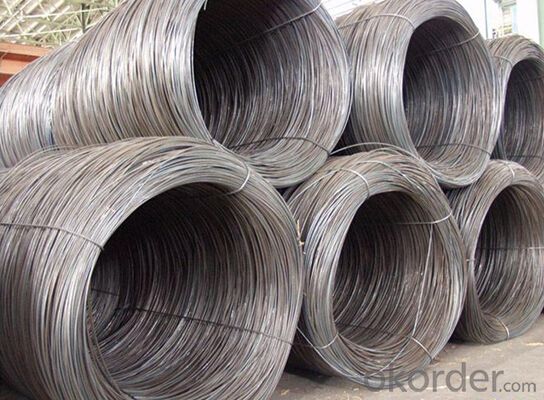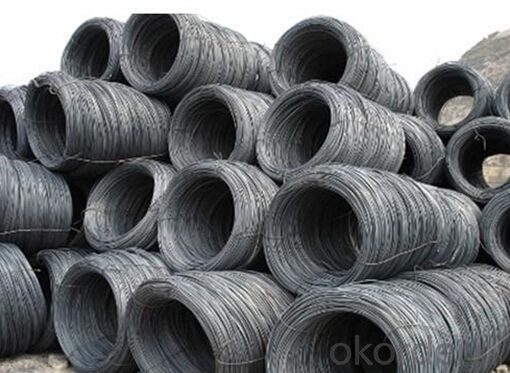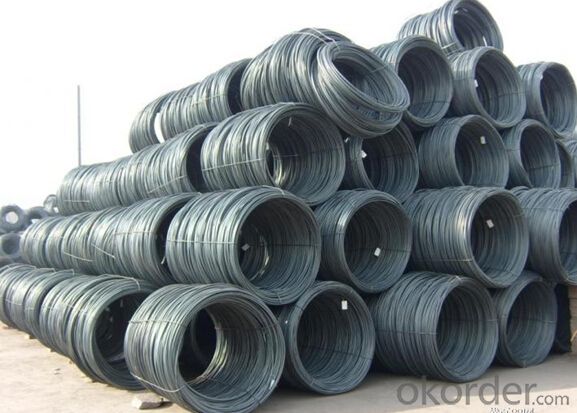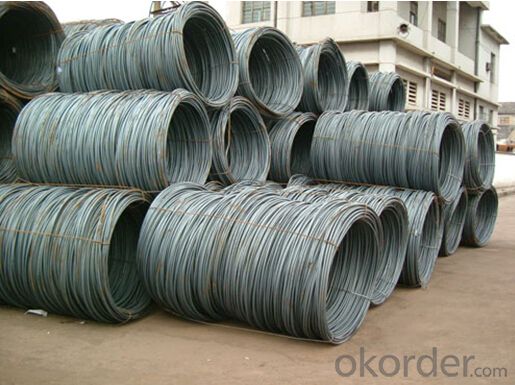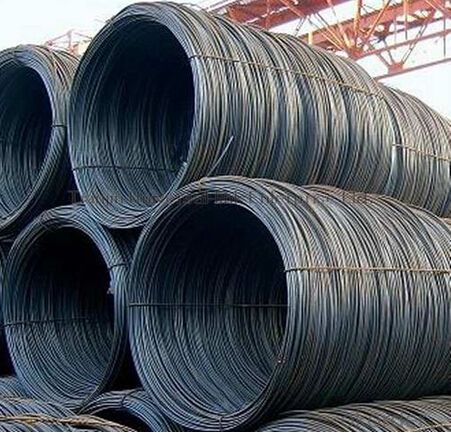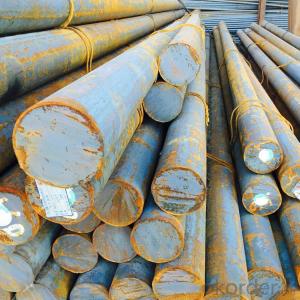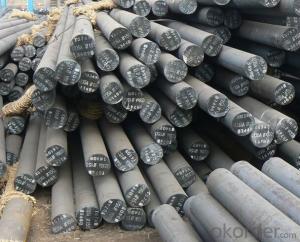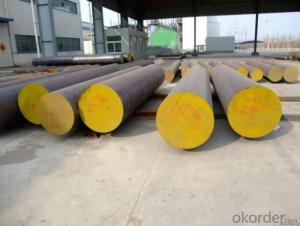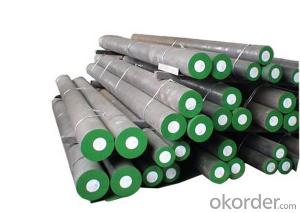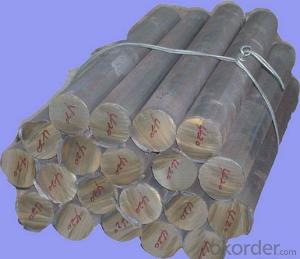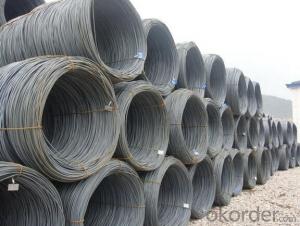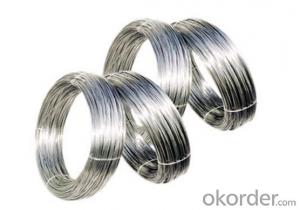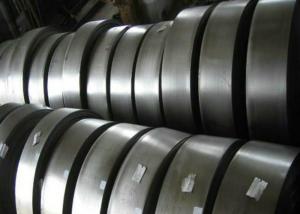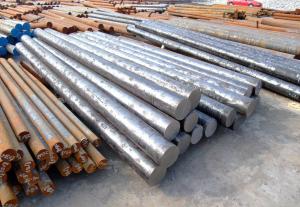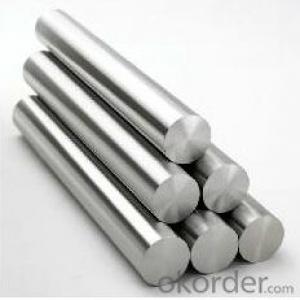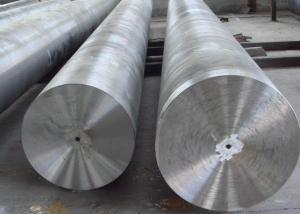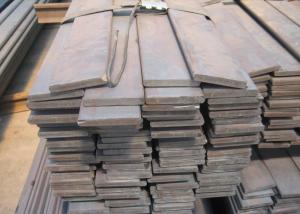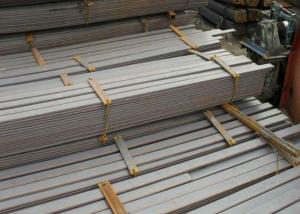Grade SAE1008B/1012B/1018B/1022B Hot Rolled Steel Wire Rod in Coils
- Loading Port:
- Tianjin
- Payment Terms:
- TT OR LC
- Min Order Qty:
- 3 m.t.
- Supply Capability:
- 10000 m.t./month
OKorder Service Pledge
Quality Product, Order Online Tracking, Timely Delivery
OKorder Financial Service
Credit Rating, Credit Services, Credit Purchasing
You Might Also Like
Specification
Type:
Carbon Steel,Spring Steel,Bearing Steel,Gear Steel,Deformed Steel,Stainless Steel,Alloy Steel
Shape:
Steel Coil,Steel Sheet,Steel Wire Rod,Steel Flat Bar,Steel Square Bar,Steel Angle,Steel Round Bar,Steel Billets
Technique:
Hot Rolled,Cold Rolled,Cold Drawn,ERW,Forged,Saw,Extruded,EFW,Spring
Surface Treatment:
Galvanized,Coated,Copper Coated,Color Coated,Oiled,Dry,Chromed Passivation,Polished,Bright,Black,PVDF Coated
Certification:
ISO,SGS,BV,IBR,RoHS,CE,API,BSI,UL
Thickness:
6.5mm-12mm
Width:
6.5mm-12mm
Length:
In coils
Outer Diameter:
6.5mm-12mm
Net Weight:
2m.t.
Packaging:
Seaworthy packaging
Grade SAE1008B/1012B/1018B/1022B Hot Rolled Steel Wire Rod in Coils
Detailed Information of the Grade SAE1008B/1012B/1018B/1022B Hot Rolled Steel Wire Rod in Coils
| Name | Hot Rolled High Carbon Wire Rod |
| Shape | Round Bar/Square Bar/Flat Bar/Plate/Wire |
| Standard | GB/ASTM/SAE/AISI/DIN/JIS/EN/BS |
| Surface Treatment: | Black/Peeling/Polished/Machined |
| Delivery Condition: | Hot Rolled or Forged/Peeled or Black Surface |
| Test | SGS/UT 100% Elements Testing |
| Certificate: | ISO/Mill Certificate |
| Service: | 24 hours online service / |
| more than 20 years trading and manufacture | |
| Quality Assurance: | the third party inspection, such as SGS, BV, TUV…etc. is acceptable |
| Packaging Details: | Seaworthy Packaging or as per customer's packing instruction |
Chemical Composition of the Grade Grade SAE1008B/1012B/1018B/1022B Hot Rolled Steel Wire Rod in Coils
| Grade | Chemical Composition(%) | |||||
| C | Mn | Si | S | P | B | |
| SAE1008 | 0.1max. | 0.3~0.50 | 0.15max | 0.050max | ≤0.040 | >0.0008 |
| Mechanical properties | ||||||
| Yield strength(N/mm2) | Tensile strength(N/mm2) | Elongation(%) | ||||
| 250-280 | 350-380 | ≥32 | ||||
Company Introduction the Grade Grade SAE1008B/1012B/1018B/1022B Hot Rolled Steel Wire Rod in Coils
CNBM International Corporation is the most import and export platform of CNBM group(China National Building Material Group Corporation) ,which is a state-owned enterprise, ranked in 270th of Fortune Global 500 in 2015.
With its advantages, CNBM International are mainly concentrate on Cement, Glass, Iron and Steel, Ceramics industries and devotes herself for supplying high quality series of refractories as well as technical consultancies and logistics solution.
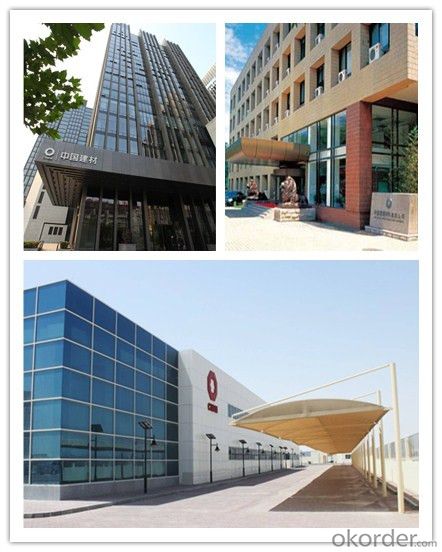
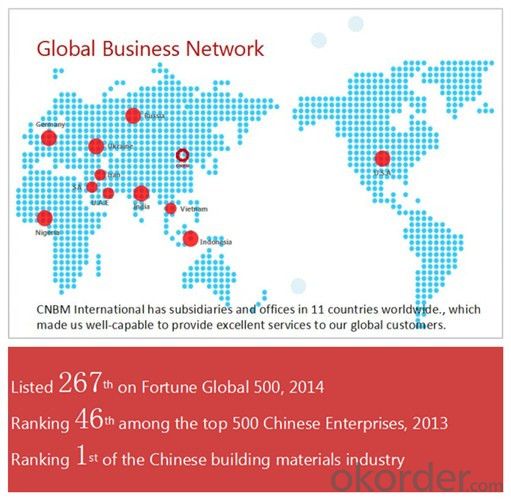
| After-sale service | CNBM provides the services and support you need for every step of our cooperation. We’re the business partners you can trust; you can relax and get on with doing business. |
| For any problem, please kindly contact us at any your convenient time, we’ll reply you in our first priority within 24 hours | |
| Advantages | Industry experience over 20 years. |
| Shipment of goods -More than 70 countries worldwide. | |
| The most convenient transport and prompt delivery. | |
| Competitive price with best service. | |
| High technical production line with top quality products. | |
| High reputation based on best quality products. |
Packaging & Delivery the Grade SAE1008B/1012B/1018B/1022B Hot Rolled Steel Wire Rod in Coils
| Packaging Detail | Sea worthy packing /as per customer's packing instruction |
| Delivery Detail | 15 ~ 40 days after receiving the deposit |
Products Show
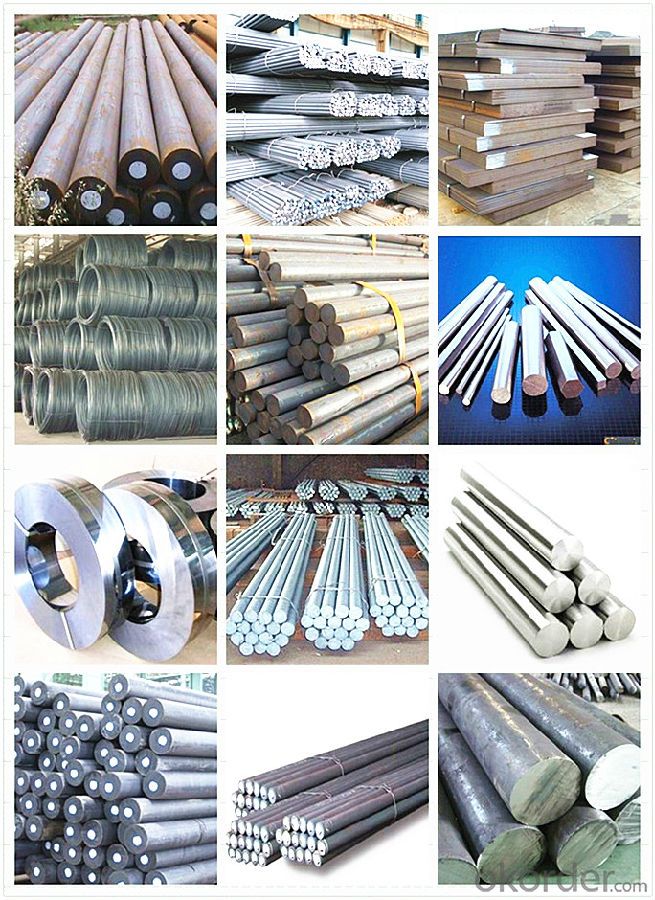
FAQ:
| Are you a trader or manufacturer? | Manufacturer |
| What’s the MOQ? | 3 metric ton |
| What’s your delivery time? | 15-35 days after downpayment received |
| Do you Accept OEM service? | Yes |
| what’s your delivery terms? | FOB/CFR/CIF |
| What's the Payment Terms? | 30% as deposit,70% before shipment by T/T |
| Western Union acceptable for small amount. | |
| L/C acceptable for large amount. | |
| Scrow ,Paybal,Alipay are also ok | |
| Why choose us? | Chose happens because of quality, then price, We can give you both. |
| Additionally, we can also offer professional products inquiry, products knowledge train (for agents), smooth goods delivery, excellent customer solution proposals. | |
| What's your available port of Shipment? | Main Port, China |
| What’s your featured services? | Our service formula: good quality+ good price+ good service=customer's trust |
| Where are your Market? | Covering more than 160 countries in the world |
- Q: What are the different heat treatment processes for special steel?
- There are several heat treatment processes for special steel, including annealing, quenching, tempering, and normalizing. Annealing involves heating the steel to a specific temperature and then slowly cooling it, which helps to enhance its ductility and reduce internal stresses. Quenching is a rapid cooling process that involves immersing the steel in a liquid, such as water or oil, to increase its hardness and strength. Tempering is a process that follows quenching, where the steel is heated to a lower temperature and then cooled, which helps to relieve internal stresses and improve toughness. Normalizing is a process similar to annealing, but the steel is air-cooled instead of being slowly cooled, resulting in a more refined grain structure and improved mechanical properties.
- Q: What are the properties of corrosion-resistant stainless steel?
- Corrosion-resistant stainless steel possesses several key properties that make it highly resistant to corrosion. These properties include a high chromium content, which forms a protective oxide layer on the surface of the steel, preventing corrosion. Additionally, stainless steel is often alloyed with other elements such as nickel and molybdenum, which further enhance its corrosion resistance. The steel is also highly durable, with excellent strength and toughness, making it suitable for a wide range of applications in various industries. Overall, corrosion-resistant stainless steel offers exceptional resistance to corrosion, ensuring its longevity and reliability in harsh environments.
- Q: What are the different methods for surface hardening special steel?
- There are several methods available for surface hardening special steel, each with its specific advantages and applications. Some of the commonly used methods are: 1. Carburizing: This process involves heating the steel in a carbon-rich environment, typically using a gas or liquid medium. The carbon atoms diffuse into the steel's surface, forming a high-carbon layer, which results in increased hardness. Carburizing is suitable for complex-shaped parts and provides good wear resistance. 2. Nitriding: Nitriding is a process where the steel is exposed to nitrogen-rich atmospheres at elevated temperatures. The nitrogen atoms diffuse into the steel's surface, forming nitrides, which significantly enhance the surface hardness and wear resistance. Nitriding is often used for parts requiring high fatigue strength and resistance to galling and fretting. 3. Induction hardening: Induction hardening utilizes high-frequency alternating currents to heat the steel's surface rapidly. This localized heating is followed by quenching, creating a hardened layer. Induction hardening is ideal for parts with localized wear areas or where only specific regions need to be hardened. 4. Flame hardening: Flame hardening involves heating the steel's surface to a high temperature using an oxy-fuel flame and then rapidly quenching it. This method is suitable for large and heavy parts that require deep hardening. Flame hardening provides good wear resistance and toughness. 5. Laser hardening: Laser hardening is a precise and localized surface hardening technique. A laser beam is used to heat the steel's surface, and quenching is performed afterward. This method offers high flexibility and control, making it suitable for complex geometries and small areas that require hardness improvement. 6. Carbonitriding: Carbonitriding is a combination of carburizing and nitriding processes. The steel is exposed to an atmosphere containing both carbon and nitrogen, resulting in the formation of a compound layer with improved hardness and wear resistance. Carbonitriding is commonly used for parts requiring a balance of hardness, toughness, and wear resistance. It is important to note that the selection of the appropriate surface hardening method depends on factors such as the specific steel composition, desired hardness depth, part geometry, intended application, and cost considerations.
- Q: How is weathering steel used in outdoor structures?
- Weathering steel, also known as corten steel, is commonly used in outdoor structures due to its unique properties. It forms a protective rust-like surface when exposed to the elements, which acts as a natural barrier against further corrosion. This makes it highly resistant to rust and erosion, making it ideal for outdoor structures such as bridges, sculptures, architectural facades, and retaining walls. Additionally, weathering steel is aesthetically pleasing and requires minimal maintenance, making it a popular choice in various outdoor applications.
- Q: What are the main advantages of using special steel in the mining industry?
- The main advantages of using special steel in the mining industry are its exceptional strength, durability, and resistance to wear and corrosion. This allows for the construction of heavy-duty equipment and machinery that can withstand the harsh and demanding conditions of mining operations. Special steel also has the ability to retain its properties at high temperatures, making it suitable for applications such as drilling and cutting through tough materials. Additionally, it offers increased safety by minimizing the risk of equipment failure, ensuring a more efficient and productive mining process.
- Q: How does special steel contribute to the performance of industrial machinery?
- The role of special steel in enhancing the performance of industrial machinery is crucial in multiple ways. Firstly, its superior mechanical properties, including high strength, hardness, and toughness, make it suitable for withstanding heavy loads, vibrations, and impact forces commonly encountered in industrial applications. This enables the machinery to operate efficiently and reliably under demanding conditions. Additionally, special steel's excellent corrosion resistance is particularly important in industries where machinery is exposed to harsh environments or corrosive substances. By preventing component degradation due to corrosion, special steel helps extend the machinery's lifespan and reduce maintenance costs. Furthermore, manufacturers can tailor special steel to specific applications through various alloying elements and heat treatments. This optimization allows for properties like wear resistance, heat resistance, or high-temperature strength to meet the specific requirements of industrial machinery. By using special steel, manufacturers can achieve higher performance levels and improve overall efficiency. Moreover, special steel offers superior dimensional stability and machinability. This ensures precise manufacturing of components, reducing the potential for errors or inaccuracies that may affect machinery performance. The machinability of special steel also allows for easier fabrication and assembly, improving the overall production process and reducing manufacturing costs. In conclusion, special steel significantly contributes to the performance of industrial machinery through its superior mechanical properties, corrosion resistance, tailorability, dimensional stability, and machinability. By incorporating special steel into machinery components, manufacturers can enhance durability, reliability, and efficiency, ultimately leading to improved productivity and profitability in various industries.
- Q: Can special steel be used in the production of surgical implants?
- Yes, special steel can be used in the production of surgical implants. Special steel, such as stainless steel, is often preferred for surgical implants due to its high strength, corrosion resistance, and biocompatibility. It is commonly used for various types of implants, including orthopedic, dental, and cardiovascular implants.
- Q: What are the different methods of surface tumbling for special steel?
- Special steel can be surface tumbled using various methods, including barrel tumbling, vibratory tumbling, and centrifugal tumbling. To achieve a smooth and polished surface finish, barrel tumbling is commonly employed. This method involves placing the steel parts in a rotating barrel with abrasive media. As the barrel rotates, the steel parts tumble and come into contact with the abrasive media, effectively eliminating burrs, sharp edges, and surface imperfections. Vibratory tumbling, on the other hand, utilizes a vibrating container for surface tumbling special steel. The steel parts are placed in this container along with abrasive media. The vibration causes the steel parts to move and interact with the abrasive media, resulting in the removal of surface imperfections. Vibratory tumbling is often chosen for delicate or complex-shaped steel parts due to its gentler action compared to barrel tumbling. For precise control over the tumbling process, centrifugal tumbling is a specialized method that employs centrifugal force. Steel parts are positioned inside a rotating drum, which is then spun at high speed. The centrifugal force propels the steel parts to move and come into contact with the abrasive media, resulting in the elimination of surface imperfections. Centrifugal tumbling is particularly suitable for smaller or intricate steel parts. In summary, these different methods of surface tumbling offer diverse options for achieving the desired surface finish for special steel. The selection of a method depends on factors such as the size, shape, and delicacy of the steel parts, as well as the desired level of surface finish.
- Q: What are the advancements and trends in the field of special steel?
- In recent years, there have been significant advancements and emerging trends in the field of special steel. One major advancement is the development of high-strength and high-performance alloys, which offer improved mechanical properties and resistance to wear, corrosion, and extreme temperatures. Additionally, there has been a focus on the production of special steel with enhanced sustainability and reduced carbon footprint, in response to growing environmental concerns. Another trend is the increasing use of special steel in additive manufacturing or 3D printing, allowing for the creation of complex and customized components. Furthermore, the integration of digital technologies and automation in steel production processes has improved efficiency, quality control, and overall productivity. These advancements and trends in special steel continue to drive innovation and expand its applications across various industries, such as automotive, aerospace, energy, and construction.
- Q: How is special steel used in the production of cutting inserts?
- The unique properties of special steel make it the ideal choice for producing cutting inserts. Cutting inserts are utilized in machining operations to shape and remove material from a workpiece. These inserts must possess the ability to endure high temperatures, resist wear and abrasion, and maintain their sharp cutting edges for extended periods. Commonly referred to as tool steel, special steel is specifically engineered to meet these requirements. It is an alloy that incorporates a variety of elements like chromium, tungsten, vanadium, and molybdenum, which enhance its mechanical properties. With its exceptional hardness, toughness, and resistance to high temperatures, special steel is a suitable material for cutting inserts. To further augment its properties, the special steel employed in manufacturing cutting inserts undergoes a series of processes, including heat treatment. This process involves subjecting the steel to specific temperatures and rapidly cooling it, resulting in increased strength and hardness. By undergoing heat treatment, the cutting inserts become capable of withstanding the extreme forces and temperatures encountered during machining operations. Moreover, special steel can be coated with materials like titanium nitride or diamond-like carbon to enhance its performance. These coatings contribute to the hardness, friction reduction, and overall wear resistance of the cutting inserts, ultimately extending their lifespan and improving efficiency. In conclusion, special steel is selected for the production of cutting inserts due to its remarkable hardness, toughness, high-temperature resistance, and wear resistance. These properties enable the cutting inserts to withstand the demanding conditions of machining operations and retain their sharp cutting edges for prolonged periods. As a result, material removal is carried out efficiently and precisely.
Send your message to us
Grade SAE1008B/1012B/1018B/1022B Hot Rolled Steel Wire Rod in Coils
- Loading Port:
- Tianjin
- Payment Terms:
- TT OR LC
- Min Order Qty:
- 3 m.t.
- Supply Capability:
- 10000 m.t./month
OKorder Service Pledge
Quality Product, Order Online Tracking, Timely Delivery
OKorder Financial Service
Credit Rating, Credit Services, Credit Purchasing
Similar products
Hot products
Hot Searches
Related keywords
